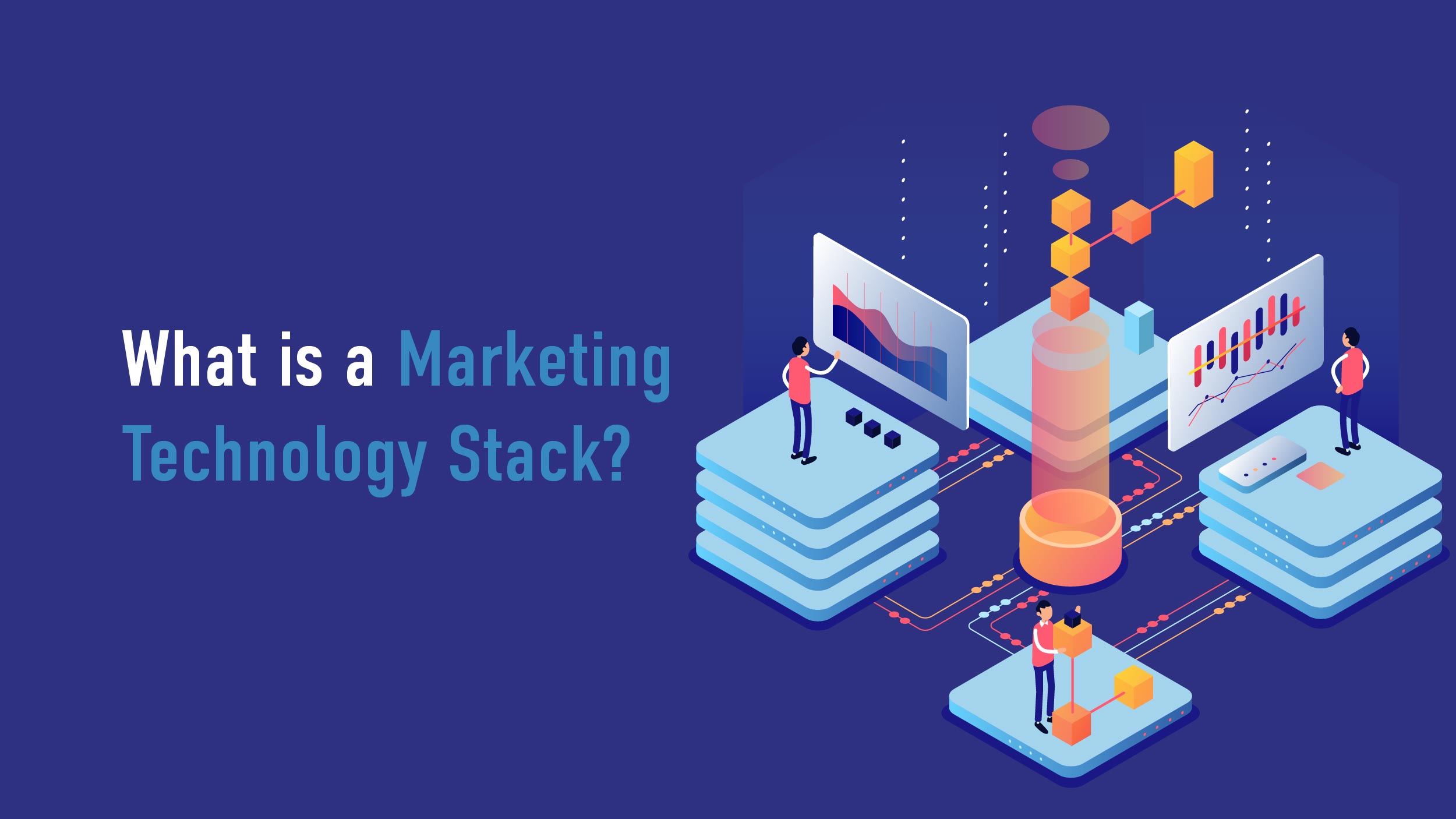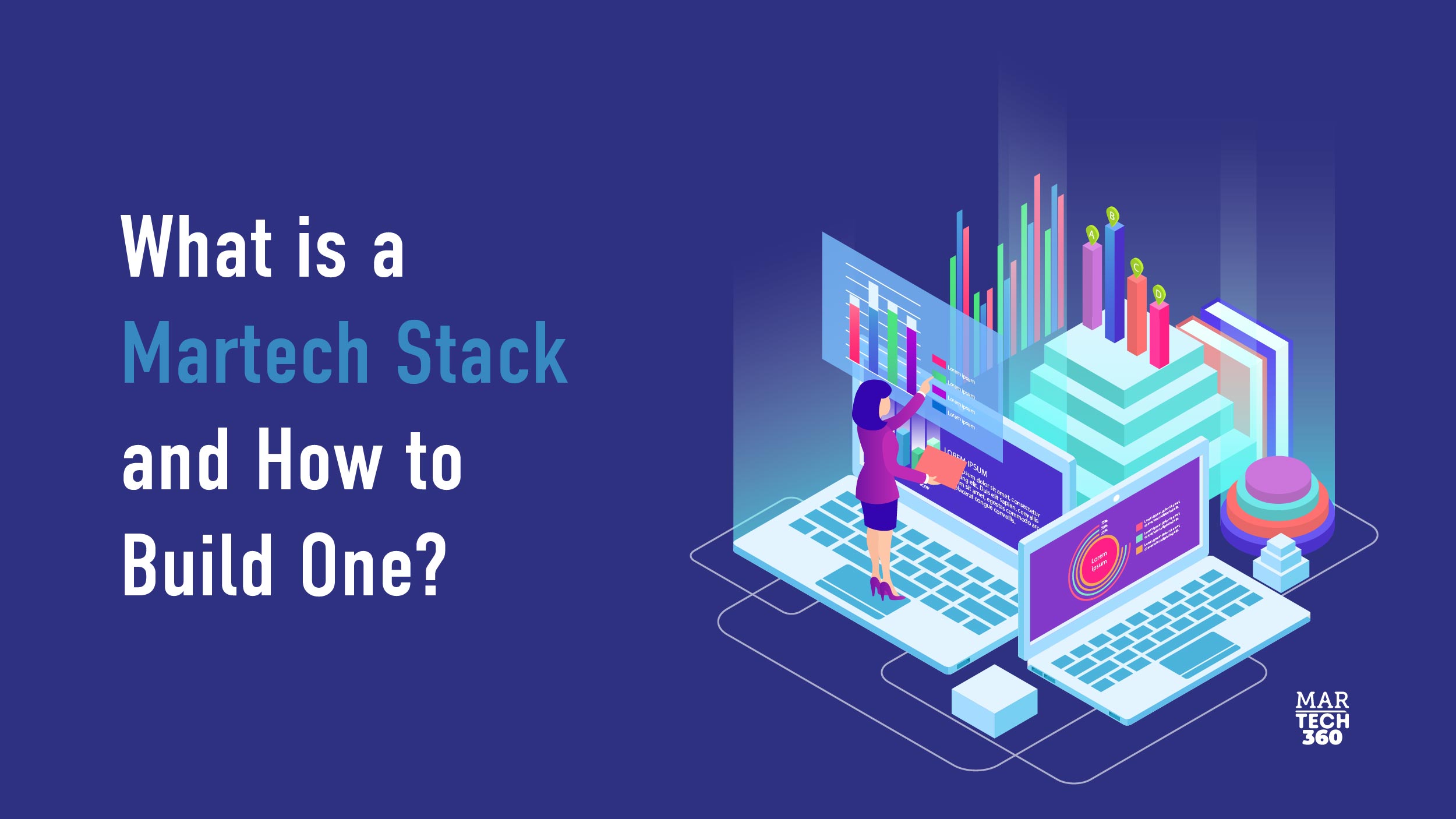The ever-evolving digital marketing environment presents marketers with the daunting task of managing a wide array of marketing technologies to drive their campaigns and strategies. Amidst this complexity, the concept of marketing technology, aka martech stack, emerges as a vital solution to streamline processes, improve efficiency, and harness actionable insights for informed decision-making. A study revealed that marketers use 61% of the functionality within their martech stack toolkits for optimum results.
Let’s dive into this blog, which everything about marketing stacks.
What is a Marketing Technology Stack?
 A marketing technology stack, often referred to as a martech stack, is a compilation of technologies utilized by marketers to perform, analyze, and enhance their services. It comprises various software products like email marketing platforms, content management systems (CMS), customer relationship management (CRM) software, and CRM analytics tools for monitoring customer behavior. The main objective of a martech stack is to optimize marketing processes throughout the customer lifecycle, empowering marketers to make data-driven decisions and execute strategies more effectively.
A marketing technology stack, often referred to as a martech stack, is a compilation of technologies utilized by marketers to perform, analyze, and enhance their services. It comprises various software products like email marketing platforms, content management systems (CMS), customer relationship management (CRM) software, and CRM analytics tools for monitoring customer behavior. The main objective of a martech stack is to optimize marketing processes throughout the customer lifecycle, empowering marketers to make data-driven decisions and execute strategies more effectively.
In modern marketing operations, a well-structured martech stack is indispensable. It allows organizations to automate tasks, streamline workflows, and leverage data for informed decision-making. With a robust martech stack in place, businesses can efficiently manage and execute digital marketing, affiliate and partner marketing, events, app, and website optimization, among other activities. This leads to enhanced marketing efficiency, increased business agility, and improved return on investment for every marketing dollar spent.
Also Read: B2B Customer Experience: Everything You Need to Know in 2024
How to Build Martech Stack?
To construct a robust marketing technology stack, follow these key steps derived from insights shared by industry experts and practitioners:
- Evaluate Current and Future Requirements: Begin by assessing your organization’s existing marketing technology landscape while considering future needs. Account for factors like team expansion, potential mergers, or shifts in marketing strategies.
- Select Core Technologies: Identify foundational technologies with a strong track record and widespread adoption. Customize your choices based on your business size, type, and marketing approach. Ensure alignment with organizational goals and customer interaction requirements.
- Optimize Traditional Processes: Streamline traditional marketing workflows by selecting tools that cater to all operational stages, from planning to execution, measurement, and optimization.
- Leverage Data Insights: Integrate tools that enable data-driven decision-making and offer actionable insights. This encompasses analytics platforms, CRM systems, and marketing automation solutions.
- Develop a Comprehensive Strategy: Constructing a marketing technology stack necessitates a comprehensive strategy that balances organizational needs, budget constraints, and top priorities. Ensure that selected technologies align with business objectives and contribute to a high return on investment.
By adhering to these steps, organizations can construct a marketing technology stack that efficiently supports marketing operations, drives revenue, and fuels business expansion.
Benefits of Martech stack
A well-structured martech stack offers a range of significant benefits for businesses. Here are some key advantages:
- Enhanced Efficiency and Communication: Martech stacks empower marketing teams to operate more efficiently and communicate more seamlessly, fostering streamlined processes and enhanced collaboration.
- Data-Driven Decision Making: Leveraging a martech stack enables organizations to make informed, data-driven decisions, resulting in more effective marketing strategies and campaigns.
- Improved Customer Engagement: A well-integrated martech stack facilitates personalized and timely communication with customers, elevating engagement levels and overall satisfaction.
- Streamlined Operations and Analysis: Martech stacks play a pivotal role in refining marketing operations, analyzing growth experiments, and acquiring customers through innovative methodologies and strategies.
- Data Consistency and Future-Proofing: By maintaining data consistency across applications and teams, a cohesive martech stack minimizes errors and provides deeper insights into the marketing landscape. Additionally, it aids in future-proofing businesses by offering a better understanding of customers and enabling more effective strategies.
What are the Key Components of Martech Stack?
 Constructing a robust marketing technology stack requires a tailored approach based on the type of business and its specific needs. Whether catering to consumers (B2C) or businesses (B2B), marketers should consider foundational technologies essential for both realms. Here’s a breakdown of key components:
Constructing a robust marketing technology stack requires a tailored approach based on the type of business and its specific needs. Whether catering to consumers (B2C) or businesses (B2B), marketers should consider foundational technologies essential for both realms. Here’s a breakdown of key components:
- Content Management System (CMS): Powers websites, blogs, and relevant web properties for customer engagement.
- Advertising Technology: Encompasses SEM, display ads, retargeting, and ad tracking or attribution software for customer acquisition.
- Email: Essential for customer communications and often integrated into marketing automation or inbound marketing platforms.
- Insights and Analysis: Provides access to data for measuring digital marketing activity, including website and business analytics, data warehouses, and content intelligence.
- Experiential Marketing: Manages events, conferences, and webinars, crucial for customer engagement.
- Experience Optimization: A/B testing, personalization software, and analytics-driven action for efficient marketing campaigns.
- Social Media: Monitors social activity, facilitates social engagement, and leverages paid advertising options on platforms like LinkedIn and Facebook.
- Digital Asset Management (DAM): Stores and manages static assets like images, documents, and videos.
- Customer Relationship Management (CRM): Tracks marketing attribution, customer relationships, and insights for B2B marketers.
- Search Engine Optimization (SEO): Drives organic website traffic through strategies to rank higher in search engines like Google.
Furthermore, aligning marketing technology with team capabilities is crucial for maximizing its benefits. Consider these categories to complement your team’s expertise:
- Customer Acquisition: Includes online marketing, partner marketing, event marketing, and website optimization.
- Brand & Communications: Covers social media, public relations, sponsorships, and broadcast advertising.
- Product Marketing: Encompasses product marketing, analyst relations, and content marketing.
- Marketing Operations: Focuses on campaign performance, data analysis, and insight, with marketing ops playing a pivotal role in enabling smart decision-making with marketing data.
By strategically selecting technologies and aligning them with team capabilities, businesses can build a marketing technology stack that drives efficiency, enhances customer engagement, and supports overall marketing objectives.
Building and Utilizing Your Marketing Stack
Here’s a step-by-step guide on how to leverage your marketing stack for maximum impact:
- Define Your Brand Essence and Goals: Start by defining your brand’s essence, personality, and overarching goals. Understand what sets your brand apart and identify the key objectives you aim to achieve through your marketing efforts.
- Establish Digital Presence: Create a robust digital presence by developing a company website and setting up social media platforms like Instagram and Facebook. Optimize your online presence to enhance visibility and attract potential customers.
- Enhance SEO: Improve your search engine optimization (SEO) strategy to ensure your brand appears prominently in relevant keyword searches. Utilize keyword research, content optimization, and link-building techniques to boost your search engine rankings.
- Collect customer data: Set up mechanisms to collect and store customer data effectively. This data will serve as the foundation for personalized marketing campaigns and targeted communications.
- Implement email marketing: Utilize customer data to create targeted email marketing campaigns. Leverage automation tools to streamline the process and deliver personalized messages that resonate with your audience.
- Explore Additional Marketing Channels: Consider incorporating other marketing channels into your stack, such as direct mail and marketing events. These channels can complement your digital efforts and help you reach customers through multiple touchpoints.
- Engage with Customers: Utilize the layers of supportive technology within your marketing stack to engage with customers effectively. Leverage data insights to tailor your messaging, personalize customer interactions, and drive engagement.
- Measure and Optimize: Regularly monitor the performance of your marketing efforts and track key metrics to gauge success. Use analytics tools to gain insights into customer behavior, campaign effectiveness, and areas for improvement. Adjust your strategy and optimize your marketing stack accordingly to drive better results.
By following these steps and leveraging the layers of technology within your marketing stack, you can effectively engage with customers and achieve your marketing goals.
The Bottom Line
In today’s digital landscape, there’s no need to grapple with outdated, cumbersome legacy software. We firmly believe that productivity shouldn’t be sacrificed for power. The best tools mentioned above for martech stack seamlessly blend power with user-friendliness. By prioritizing customer satisfaction and exceptional experiences over software management, your business can pave the way for superior growth.


Comments are closed.